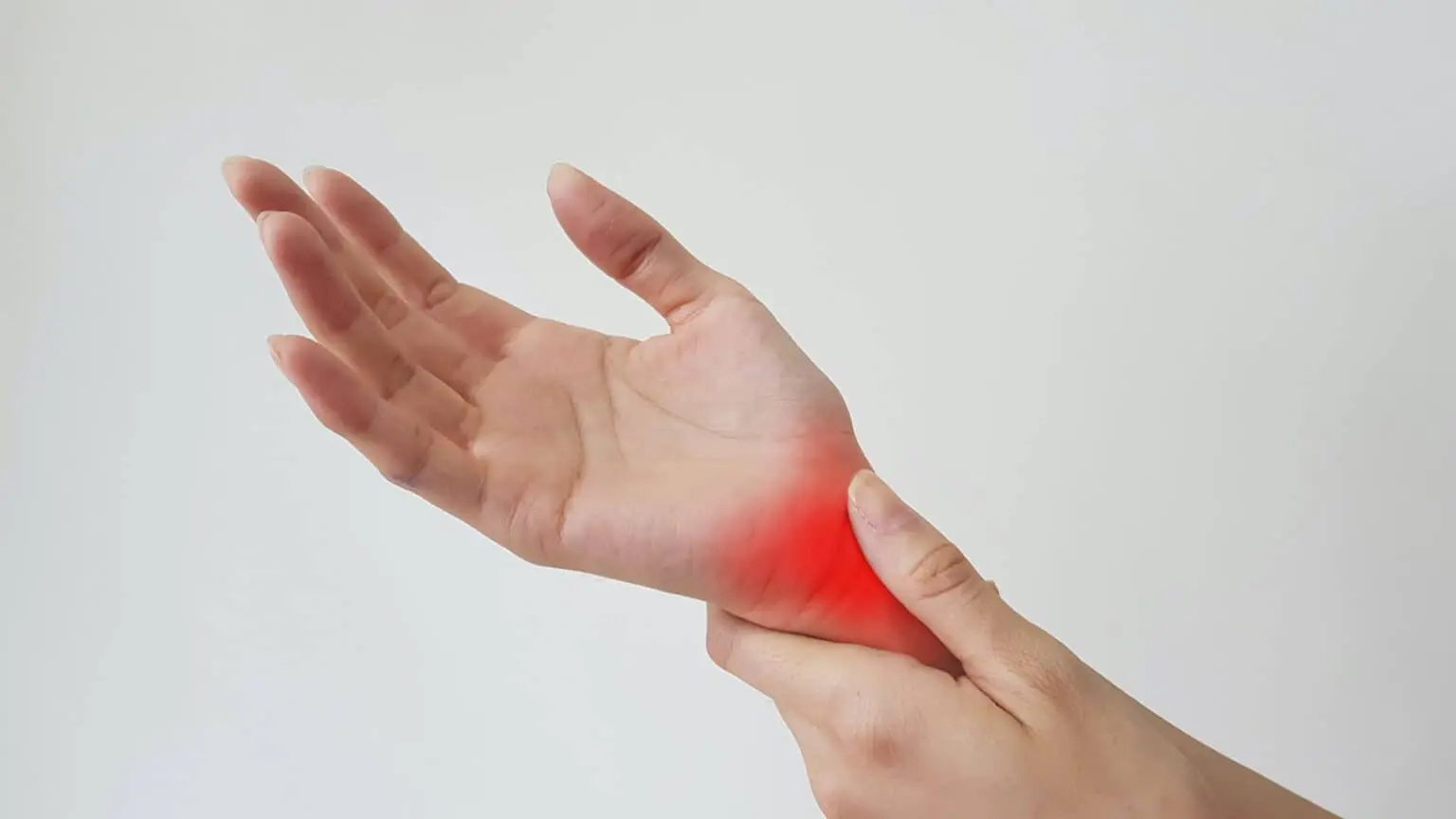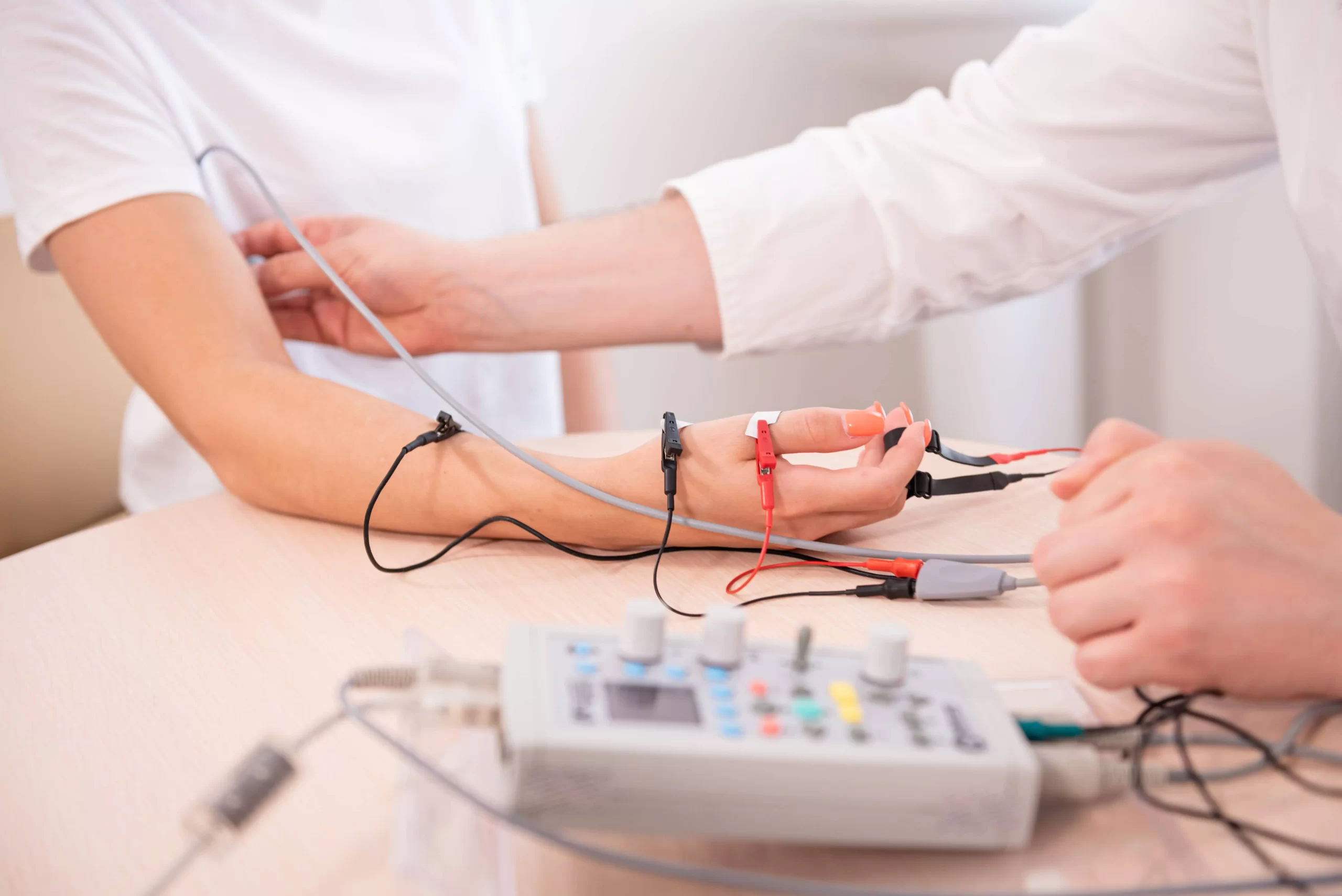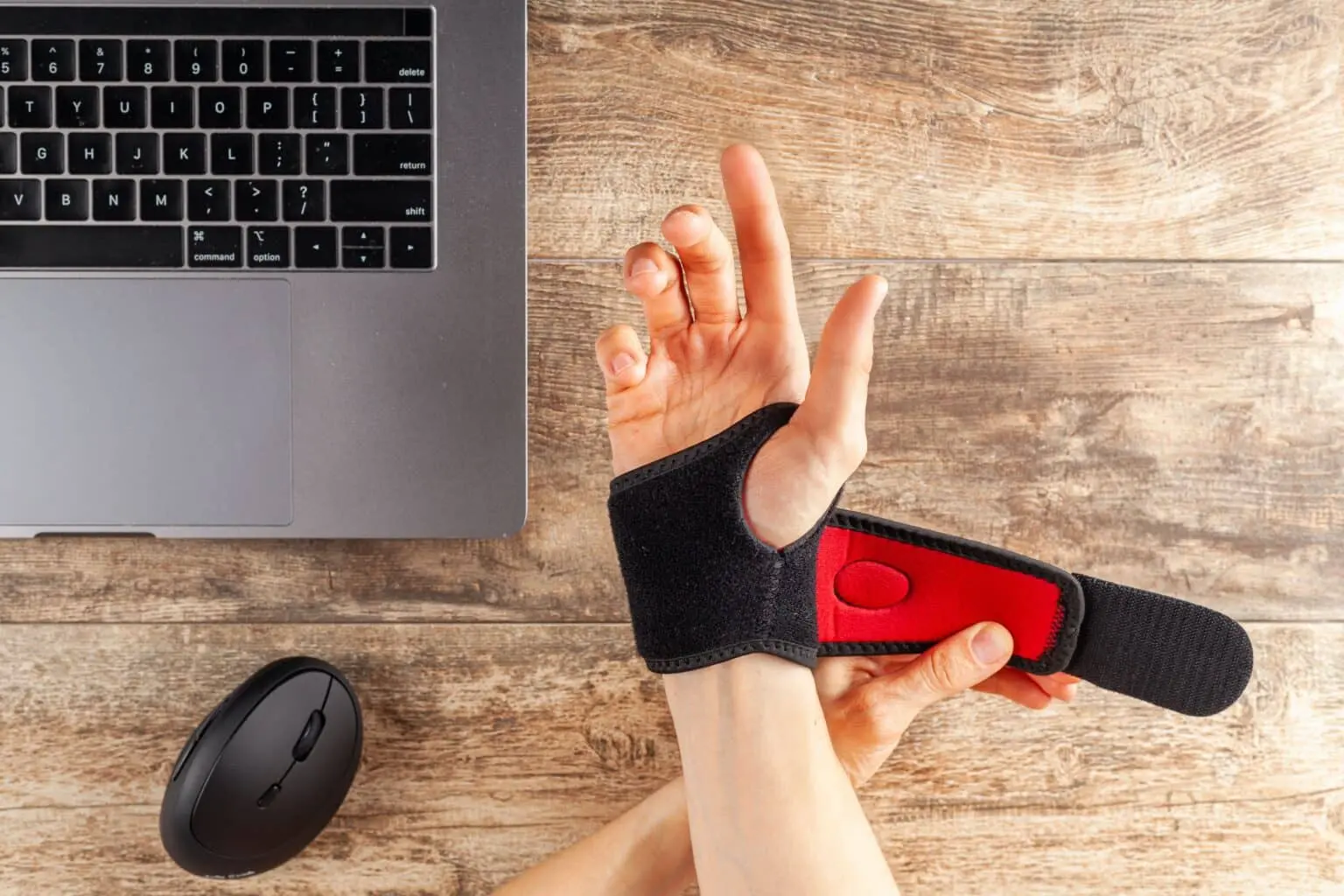Nerve Compression
On this page, we will try to explain the details about nerve compression in the arm and hand, nerve compression in the leg, nerve compression surgery.I wish you all healthy days.
Nerve Compression Symptoms
Nerves can be jammed in the arms, hands, legs and feet due to pressure at any stage along the path they travel.Areas of impingement are usually joint zones. Symptoms vary according to where the nerve is pinched.Numbness, inflammation, or pain may be the only symptom. In some nerve compressions, pain is not encountered.If we look at the symptoms in general; numbness in the arms, hands, legs or feet that are enough to wake up from sleep at night, tenderness in the compression area, pain or inflammation in the areas where the nerve is watching, numbness, temporary loss of strength, weakness in the muscles in more advanced stages and difficulty in movement.


What is Nerve Compression? What Causes Nerve Compression?
This problem occurs when the nerves in our arms and legs are compressed between tissues such as tendons, bones, cartilage and muscle.The most common type among nerve compressions is carpal tunnel syndrome in the wrist.In addition, the most common nerve compression in the leg is called peroneal nerve palsy.
Types of Nerve Compression
Patients' complaints vary according to the location of the nerves.For this reason, it will be more appropriate to evaluate these findings by dividing them into two as nerve compression in the arm or hand, nerve compression in the leg and foot.
Nerve Compression in Hand
The name of this problem seen in the wrist is carpal tunnel syndrome.It is a very common situation. It is usually more common between the ages of 40-60.The area we call the carpal tunnel is located in the inner part of the wrist in the hand, there are 2 nerves passing through it. One of them is the nerve that goes to one half of the first second and third fingers and the fourth finger, and the other half to the five fingers with the other half of the fourth finger.The most common symptoms are numbness and pain, which increase especially at night and sometimes continue during the day.If the problem is not solved in later periods, weakness and muscle atrophy may also be encountered.
Other Nerve Compressions in the Upper Body
Less often are nerve compressions. It can be seen with compression of the radial nerve in the upper part of the arm. Also known as Saturday night paralysis. This nerve can be compressed after the arm takes an inappropriate position during deep sleep. Symptoms can also occur with sitting in the wrong position on the table, chair or sofa. In this case, the patient develops low hand and the patient has difficulty turning the wrist outwards or cannot do this movement at all. Another rare type of nerve compression in the upper part of the body is thoracic outlet syndrome. It is seen in the neck and collarbone area. This condition is usually seen in adhesions between certain muscles in the neck, a longer or more of an extra rib bone in the protrusion on the side of the seventh cervical spine bone at birth, or tumors located in the upper region of the lung. There is compression in the junction area formed by the nerves coming out of the spinal cord in the neck are Generally, numbness in the 4th and 5th fingers of the hand and pain and muscle wasting can be seen in the later period.
Nerve Compression in Arm
The name of this problem seen in the arm is cubital tunnel syndrome. It is the second most common nerve compression in the arm and hand area. The ulnar nerve is compressed as it passes through the tunnel in the elbow area, and then this nerve goes to 5 fingers with one half of 4 fingers on the hand. When it comes to compression, numbness and pain occur in the 4th and 5th fingers of the hand. This nerve goes especially to the muscles that allow the hand to be closed. In cases where the compression is advanced, weakening of these muscles is seen and symptoms such as weakening of the muscles and claw hand may occur between the bones in the hands.

Nerve Compression in Leg
The most common type of nerve compression in the leg is peroneal nerve palsy. This nerve rises to the surface on the outside in the knee area of the leg and is trapped in the head part of the bone, which we call the kaval bone. In the case of sitting with legs over legs, sitting cross-legged or squatting on the floor for a long time, this nerve is compressed and symptoms may develop. As a result of the pressure in this area, a loss of strength in the leg may develop rapidly and the condition we call low foot may occur. It may be accompanied by loss of sensation or pain. It is more common in men. Differential diagnosis with lumbar hernia must be made. Therefore, if you have low foot and nerve compression is suspected; For differential diagnosis, lumbar magnetic resonance (MR) imaging and EMG examination called nerve measurement test should be performed together and the correct diagnosis should be made. A common nerve compression in the leg is dan meralgia paresthetica. This nerve exits the belt area of the waist and receives sensations from the outer part of the thigh. Patients complain of tingling, numbness and often inflammation on the outside of the thigh. Pain is not often seen in meralgia paresthetics. It is very easily affected by traumas. In cases such as obesity, wearing tight underwear or pants, using narrow belts or corsets, and rarely intra-abdominal tumors and fluid accumulation, meralgia paresthetica may also be encountered.
The type of nerve compression in the foot area is the compression of the posterior tibial nerve in the inner back of the ankle. Frequent foot sprains can occur due to tightly worn boots or boots squeezing the ankle. Patients may complain of numbness and pain in the toes, heel or sole. Complaints increase especially at night when the tone of the feet decreases. Walking and standing for a long time can cause symptoms to become more severe. Complaints may decrease with massages on the feet or lifting the foot high. Not wearing boots or boots that squeeze the ankle with it may also cause complaints to decrease or disappear.
One of the rare nerve compressions in the leg area is piriformis syndrome. Here the sciatic nerve, which is the thickest and largest nerve of our body, is compressed and mostly the whole leg is affected due to this compression. Pain, tingling, numbness or inflammation complaints starting from the hip to the lower parts of the leg can be seen. Piriformis syndrome can occur after compression of the muscle bearing its name on the nerve, tumors of the nerve itself, hip surgeries or incorrect injections into the hip.
In the problem between the 3rd and 4th fingers of the foot, called Morton's neuroma, there may be aching and burning pains spreading to the foot between the toes. It usually occurs as a result of wearing tight and high-heeled shoes.
Nerve Compression Diagnosis
To make an accurate diagnosis, it is necessary first to listen to the patient's history, and then conduct a careful neurological examination. When the neurosurgeon suspects nerve compression, he or she will often ask for an EMG test, popularly called a nerve measurement test, to make a diagnosis. Sometimes it may be necessary to perform MRI imaging of the neck or lumbar region to separate this problem from the lumbar and cervical hernia.


Nerve Compression Treatment
Treatment varies according to the area of complaints and compression. Patients with mild or moderate problems are rested by applying splints that protect the problematic joint and allow it to rest for a while, and the area where the nerve is compressed is rested and physical therapy and analgesic, anti-inflammatory pain and inflammation reducing drugs can be given. Sometimes, steroid or pain medication applications called cortisone can be applied to the area where the nerve is compressed, and exercises can be given together with physical therapy. In cases with mild and moderate problems, relief can usually be achieved in the area where the nerve is compressed with these applications.

What is the Recovery Process After Nerve Compression Surgery?
After the surgeries, the complaints of the patients gradually decrease over time or may disappear completely. It is necessary to protect the operation area for a short time after the operations. Mild or moderate physical therapy and exercise practices contribute positively to the healing process. In addition, in order to prevent the same problems from happening again, it is necessary to correct professional factors and to provide training and exercises to correct errors related to the use of arms, hands, legs and feet.
Nerve Compression Surgery
If the existing problem does not show any improvement despite all these conservative or non-surgical treatments, if the complaints of tingling, numbness, inflammation and pain reach a level that affects the daily and work life of the patient, causing loss of strength in arms, hands, legs or feet; patients should be recommended surgical treatment. Depending on the severity of the disease and its location, the operation can be performed by open microsurgical method or closed endoscopic methods. Nerve compressions such as carpal tunnel syndrome, cubital tunnel syndrome, peroneal nerve paralysis, tarsal tunnel syndrome can be performed under local anesthesia and with a very small incision. Patients with suspected nerve compression should consult a neurosurgeon or physical therapist for examination and treatment.

How Much Does Nerve Compression Surgery Cost?
We receive a large number of patient calls who want to know the price for surgery. The publication of surgery prices in a digital environment open to all our patients is not appropriate in terms of professional ethical rules. We make the surgery fees of our patients according to the pricing list in the "Physician Practices Database" used by all other private hospitals and prepared by the Turkish Medical Association. Thus, our patients know according to which standards the price offered to them is determined, make sure of the transparency of the price and have the opportunity to compare prices.